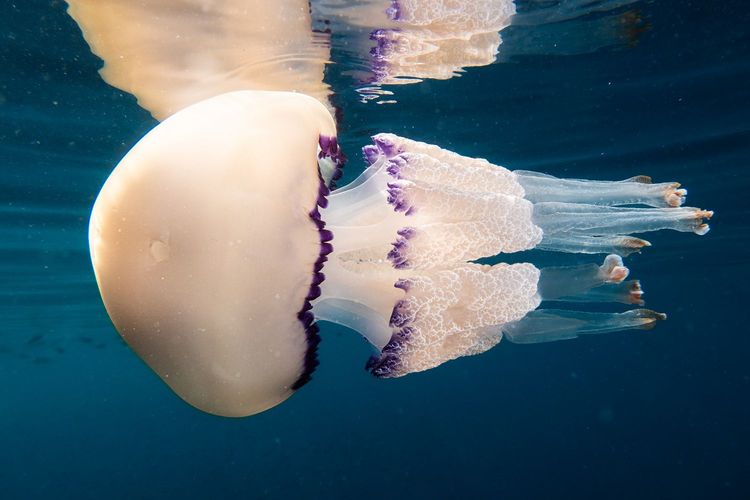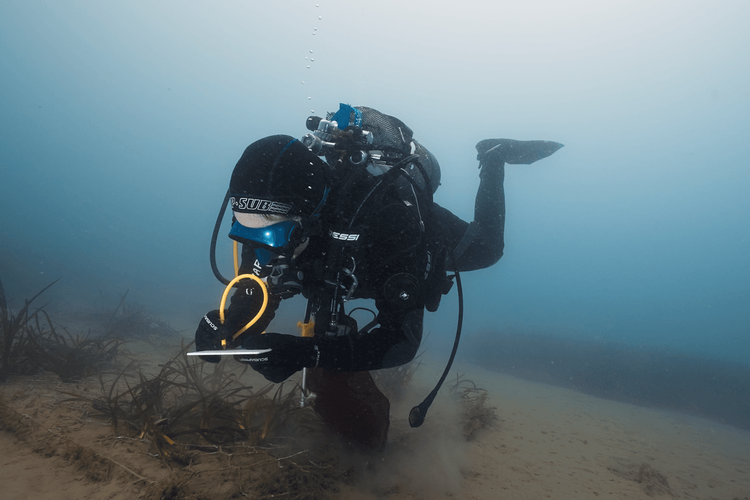
Jellyfish are often seen as stinging presences in our seas, yet they hold ancient stories and extraordinary characteristics. In this news, we’ll explore their composition, unique biological cycle, Mediterranean species, and the innovative uses that are turning these organisms into valuable marine resources.
Structure and longevity
Made up of 95% water and 5% proteins like collagen, jellyfish are light and transparent but capable of growing to impressive sizes. One example is the lion’s mane jellyfish (Cyanea capillata), whose tentacles can stretch up to 30 meters, with a bell diameter of 2.5 meters.
Jellyfish have populated the oceans for about 700 million years, predating the dinosaurs, making them living witnesses of the planet’s history. Among the most extraordinary species is Turritopsis dohrnii, often called the "immortal jellyfish" because it can revert to the polyp stage after reaching maturity, theoretically allowing it to live indefinitely. The secret lies in a process called transdifferentiation, where adult cells "rejuvenate" to the larval stage and then differentiate again.
Biodiversity in the Mediterranean Sea
There are around 2000 species of jellyfish worldwide (divided into 3 classes: Hydrozoa, Scyphozoa, and Cubozoa), ranging from tropical seas to the Arctic. In the Mediterranean, different species coexist:
- Stinging species, such as Pelagia noctiluca, the "luminous" jellyfish;
- Harmless species, including the common Rhizostoma pulmo, also known as the "barrel jellyfish," and the Mediterranean cassiopea (Cotylorhiza tuberculata), both considered indicators of good water quality.
Factors favouring jellyfish proliferation
These creatures are naturally preyed upon by many marine animals, from whales to tuna, turtles, and crustaceans; yet recently, jellyfish populations have grown drastically. The main reasons are:
- Intensive fishing, which reduces their predators;
- Warmer and hypoxic waters, well-tolerated by jellyfish;
- Artificial hard structures, such as piers or platforms, which encourage polyp attachment (the larval stage of jellyfish).
Jellyfish as a resource: blue food, cosmetics, and biotechnology
Once considered merely a problem, jellyfish now offer new opportunities:
Food
In Asia, 25–30 edible jellyfish species are consumed, with a global catch reaching millions of tons. In Europe, only a few countries classify them as "novel food," but recent studies indicate that Mediterranean species like Rhizostoma pulmo are rich in collagen, antioxidant peptides, and nutrients deemed safe according to EU regulations when properly processed.
Cosmetics and nutraceuticals
Collagen extracted from species such as the barrel jellyfish is used as an anti-aging active ingredient. The antioxidant and bioactive properties of compounds found in jellyfish make them promising ingredients for cosmetics and nutraceutical products.
Biotechnology and natural filters
Jellyfish mucus has shown surprising capabilities: it can filter nanometric particles such as microplastics, paving the way for biotechnological solutions in water treatment.
Sustainable agriculture
Jellyfish gelatin can be used as a natural fertilizer: it has already been employed in rice fields, offering an ecological alternative to traditional fertilizers.
Space research
On the International Space Station, jellyfish are used as models to study the effects of gravity on locomotion and the behavior of gelatinous tissues, contributing to space biology.


